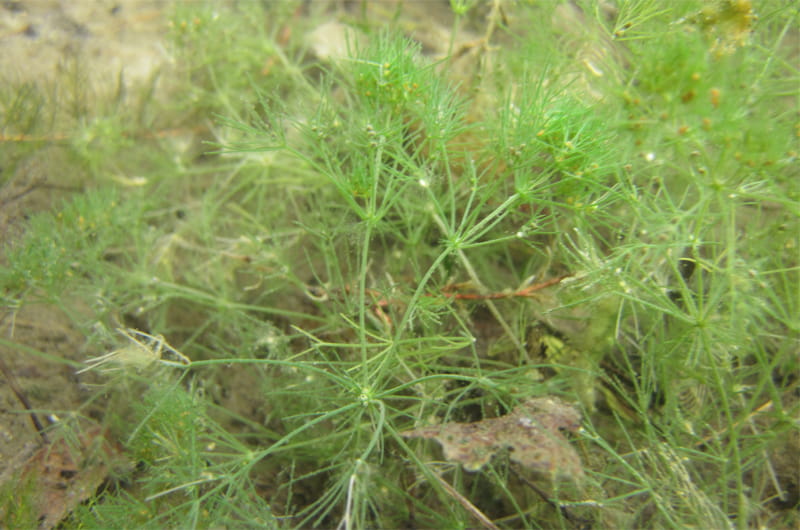Dinosaur-Era Plant Found Alive in North America for First Time
 By Frank Otto
By Frank Otto

- Drexel Selects New, World-Class Life Sciences Building at 3201 Cuthbert Street for Medical Research Operations
- Breakthrough on Gene Therapy for Hereditary Spastic Paraplegia
- Drexel Environmental Collaboratory Releases Cross-Sector Findings on Severe Weather Recovery Challenges
- Drexel Launches the Manuel Stamatakis Center for Alternative Investments at the LeBow College of Business

Imagine you’re at work and suddenly, a cheetah pokes its head through your window.
That’s about what Richard McCourt, PhD, and his colleagues dealt with when they came across Lychnothamnus barbatus, a large green alga that was thought to have died in the Western Hemisphere long before the cheetahs here died out.
“This means mainly that we don’t know as much about what’s out there as we could,” said McCourt, associate curator of Botany at the Academy of Natural Sciences of Drexel University and professor in the University’s College of Arts and Sciences. “Lychnothamnus barbatus’ survival isn’t, per se, ecologically earth-shaking, but it changes our view of what the algal flora of North America is composed of and inspires us to keep hunting for more new finds.”
A paper on the find, featuring mapping and analysis by the Academy’s John D. Hall, PhD, and lead-authored by Kenneth Karol, PhD, of the New York Botanical Garden, was published in the American Journal of Botany’s July issue.
Samples of the algae were taken from 14 lakes across Wisconsin — as well as two in Minnesota — between 2012 and 2016. Collectors knew they hadn’t seen it in North America before and, previously, the only record of Lychnothamnus barbatus on the western side of the Atlantic Ocean were Argentinian Cretaceous-era fossils (the same period from which Tyrannosaurus rex fossils are discovered).
“Almost right away we knew we might be dealing with something previously thought to be extinct because it was clearly different from any other species seen in North America,” said McCourt, who helped identify the samples after they were collected. “But we had to look at it closely to confirm the identity and also extract the DNA to confirm.”
Much like cheetahs, Lychnothamnus barbatus is relatively rare in the areas it is currently found. A “stonewort” type of algae, it is known to inhabit areas of Europe and Australasia (the area of Australia, New Zealand and Papua New Guinea).
But this species actually grows relatively tall (one foot) and has a pretty distinct shape to it. So why was it being missed?
“We might not have been missing it — it might be a new invader,” McCourt explained.
Then how could it have made the trip to not just North America, but the Midwest?
“Other species like it have probably been brought in in ballast water on ships and released into the St. Lawrence seaway or other lakes,” McCourt said.
However, the possibility remains that Lychnothamnus barbatus has always been here and we just didn’t know.
“If it went unnoticed, it is probably due to the fact that much of what is in lakes and streams is not thoroughly examined, despite centuries of collecting,” McCourt said. “We need more feet on the ground, hands in the water, collecting.”
And while there were 16 locations in the Midwest that Lychnothamnus barbatus was pulled from, there is the possibility that this dinosaur-era plant may have survived into our era elsewhere in North America.
“We are keeping an eye out, but it’s generally in the kinds of habitats that we collect for the other stonewort species that are known to be in America,” McCourt said. “So if it’s there, we will find out by looking in the right places. The trouble is, we don’t know where the right places are.”
In This Article
Contact
Drexel News is produced by
University Marketing and Communications.